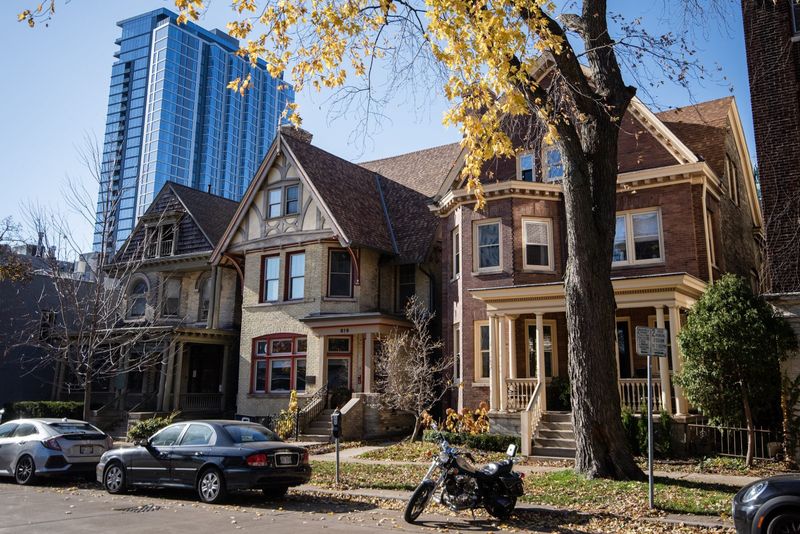Milwaukee’s lakefront energy meets a housing market that refuses to slow down. Buyers and sellers are seeing tight inventory, quick-moving listings, and steady price gains that reward smart strategies. Whether you are a first-time buyer, seasoned investor, or ready-to-list homeowner, the difference lies in timing and preparation. Dive into these 12 tips to navigate Milwaukee’s resilient market with confidence and capture opportunity before it passes you by.
1. For buyers: Act quickly
Milwaukee homes are selling faster than in many U.S. metros, so hesitation can be costly. Act fast once you find a match, and have preapproval ready to strengthen your offer. Sellers often receive multiple bids and, in some cases, prices rise above list. Streamline decisions by defining must-haves and setting a firm budget. Tour promptly, and consider flexible closing terms to stand out. Use data to support your price, yet avoid over-negotiating in a competitive setting. Coordinate with a responsive agent who can move quickly. Mortgage Professional America reported accelerated timelines, reinforcing the need for clear priorities and immediate action.
2. Know your neighbourhoods
Location drives outcomes in Milwaukee, even within a resilient citywide trend. Study school district performance, commute routes, parks access, and proximity to Lake Michigan. Review neighborhood data such as list-to-sale price ratios, days on market, and new development pipelines. Explore amenities like cafes, trails, and transit options that influence long-term value. Walk blocks at different times to gauge noise and traffic. Check municipal plans and zoning that may shape future character. Consult local market reports for hyperlocal pricing. A knowledgeable local agent can help you compare micro-markets and historical appreciation patterns to choose wisely and confidently for your goals.
3. Be prepared for low inventory
Milwaukee’s supply is tight, especially among mid-price homes, creating pressure for well-prepared buyers. Have financing preapproved, proof of funds ready, and timelines aligned. First-time buyers should clarify top priorities and acceptable trade-offs before touring. Consider expanding your search radius or property type to open more options. Move decisively when a suitable property appears. Coordinate inspections and contingencies to be competitive without compromising critical protections. The Wisconsin Institute for Law and Liberty highlights constrained housing supply. Set realistic expectations for touring multiple homes and losing a bid or two, then stay persistent. Opportunity favors the prepared and consistent.
4. Understand price growth is moderate not explosive
Milwaukee’s price growth outlook is positive yet measured, with forecasts near 5 to 7 percent. That steadiness favors value-driven strategies over aggressive flipping. Buyers should target sound homes in stable or improving areas, prioritizing fundamentals over hype. Sellers can price realistically to capture interest without extended days on market. Investors can underwrite conservative appreciation while targeting strong cash flow. Norada Real Estate data points to moderate gains, suggesting sustainable momentum. Avoid overpaying for speculative features that may not hold value. Focus on location, condition, and functionality. Long-term discipline in a moderate growth market often beats short-term risk-taking.
5. Sellers: Highlight value
Milwaukee appeals because it blends strong demand, limited supply, and relative affordability versus many coastal metros. As a seller, emphasize these advantages in your listing narrative and marketing materials. Showcase neighborhood amenities, proximity to the lakefront, and commuting ease. Stage to highlight function and lifestyle benefits. Provide a prelisting inspection to build trust and speed negotiations. Price strategically to spark competition without overshooting buyer expectations. Present recent comps demonstrating resilience and quick sales. Use professional photography and virtual tours to broaden reach. Buyers respond to clear value stories, which can elevate offers and reduce time on market.
6. Investors: Consider long-term rental demand
Constrained for-sale inventory and solid job fundamentals support healthy rental demand across Milwaukee. Investors can target neighborhoods near universities, hospitals, and employment hubs for consistent occupancy. Analyze rent growth, operating expenses, and maintenance to ensure reliable cash flow. Evaluate zoning, landlord regulations, and property taxes. Consider value-add improvements that boost rent-to-cost ratios without overcapitalizing. Diversify between small multifamily and single-family rentals where numbers pencil. Longer holding periods align well with moderate price appreciation. Track employer expansions and infrastructure projects that can sustain demand. Align financing terms to match your hold horizon and stress test for rate volatility.
7. Don’t ignore financing and headwinds
Strong fundamentals do not eliminate risks. Higher mortgage rates, regional economic shifts, and supply constraints still shape affordability and buyer behavior. Lock rates strategically and compare lenders for points, buydowns, and closing costs. Maintain a healthy appraisal buffer in competitive scenarios. Monitor employer announcements and manufacturing trends that influence local confidence. Build reserves for repairs and unexpected vacancies. Sellers should anticipate appraisal scrutiny and be prepared with comps. Buyers can consider adjustable-rate options with clear exit plans. Balance optimism with disciplined underwriting to protect outcomes. Prudent planning lets you benefit from resilience while navigating shifting market conditions.
8. Watch resale timelines
In a strong yet measured market, timing matters for both buyers and sellers. Short holding periods may not capture full value when appreciation is moderate. Consider a three to seven year horizon to balance price growth, amortization, and transaction costs. Evaluate neighborhood project pipelines that could enhance future resale appeal. Ensure improvements are broadly appealing and durable. Sellers should list during seasonally active periods for maximum exposure. Buyers can negotiate possession dates that align with personal plans. By calibrating timelines to Milwaukee’s pace, you reduce pressure to chase quick wins and improve overall return potential.
9. Focus on property condition and features
With competitive bidding and moderate growth, homes in great condition or with standout features command attention. Prioritize durable systems, energy efficiency, and modern kitchens or baths. Outdoor spaces, off-street parking, and proximity to the lakefront or trails add lifestyle value. Pre-inspections help identify upgrades that yield strong returns. Buyers can stretch value by targeting well-maintained homes over flashy but impractical finishes. Appraisers and lenders favor properties with strong functional utility. Document renovations with permits and warranties. In a resilient market, quality stands out and reduces ownership surprises, while maximizing buyer confidence and long-term satisfaction.
10. Understand local affordability dynamics
Milwaukee remains more affordable than many U.S. metros, yet first-time buyers still face challenges from tight supply. Analyze payment-to-income ratios, property taxes, and HOA fees where applicable. Use down payment assistance and first-time buyer programs to bridge gaps. Compare neighborhoods with similar amenities but different price points. The Wisconsin Institute for Law and Liberty highlights constraints that affect entry-level buyers. Build a budget that accounts for maintenance and insurance. Aim for a home that fits comfortably rather than stretching. Understanding affordability nuances lets you move decisively when a well-priced listing appears.
11. Stay informed about neighbourhood back-stories
Neighborhoods evolve through policy shifts, demographic changes, and local initiatives. Research redevelopment plans, historic district guidelines, and public safety trends. Milwaukee Independent and municipal sources can reveal context behind change. Look for infrastructure upgrades, business openings, or cultural investments that influence desirability. Engage with neighborhood associations and attend community meetings to hear firsthand perspectives. Verify assumptions with data and on-the-ground visits. Understanding back-stories helps distinguish temporary noise from durable trends, guiding smarter purchase or sale decisions. In a resilient market, knowledge advantages compound and reduce uncertainty.
12. Plan exit or upgrade strategy
Milwaukee’s resiliency and moderate growth favor clear long-term planning. Define conditions for selling, refinancing, or upgrading within five to ten years. Align improvements with expected appreciation and life events. Track equity buildup, rental comps, and rate cycles to refine your plan. Maintain liquidity for opportunities or repairs. Investors should map 1031 exchange options and depreciation schedules. Homeowners can outline value-adding renovations that also enhance livability. Document your strategy and review annually. A proactive plan reduces stress, optimizes returns, and positions you to act when the market offers compelling windows.
















